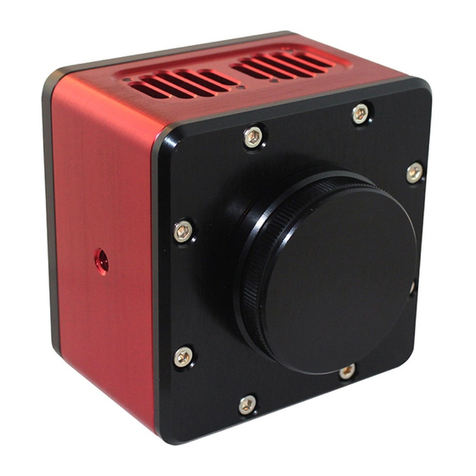
5
Dark frames
To get the most out of your Atik Apx60 camera for astrophotography, we
recommend processing your images using dark frames. You can take dark
frames by covering the front of the camera with a lens cap. Dark frame should
be taken at the same temperature, exposure length and with the same gain and
offset settings as your light frames.
A master dark should be generated by averaging a large number of individual
dark frames. This can then be subtracted from the individual image sub frames
during processing. Further information on using dark frames should be available
in the manual of whichever image processing software you choose to use. Dark
frames are not required for High-Speed Imaging.
Binning
Binning is a technique where groups of pixels are added together, with the
result being a brighter image. The CMOS sensor in the Atik Apx60 only supports
binning in software. This is where the pixel values are added together after
image acquisition, as opposed to hardware binning where pixels are combined
on the sensor.
Gain and offset
Your Atik Apx60 allows you to change the gain and offset settings for the
camera. In very simple terms, this is analogous to the volume control on a
radio. The greater the gain, the easier it is to detect faint signals; however, less
detail might be seen in the brighter ones.
Gain pre-sets
We provide three gain pre-sets, and the option to use your own custom settings.
The pre-sets are:
Low - Best for normal imaging. It is the best setting for detail in brighter objects
and when individual images have high dynamic range.
Medium - A compromise of low and high. It’s very useful if your mount is
unguided and you need to take a lot of shorter exposures.
High - Best for sensitivity on dim objects but sacrices detail in some of the
brighter parts.
Custom - - You can also experiment with using your own gain and offsets. The
gain can be set from 0 to 36 and the offset set from 0 to 4095. As mentioned,
we nd gain settings up to x30 are useful, depending on the situation, but
above this the full well depth becomes incredibly low.


































